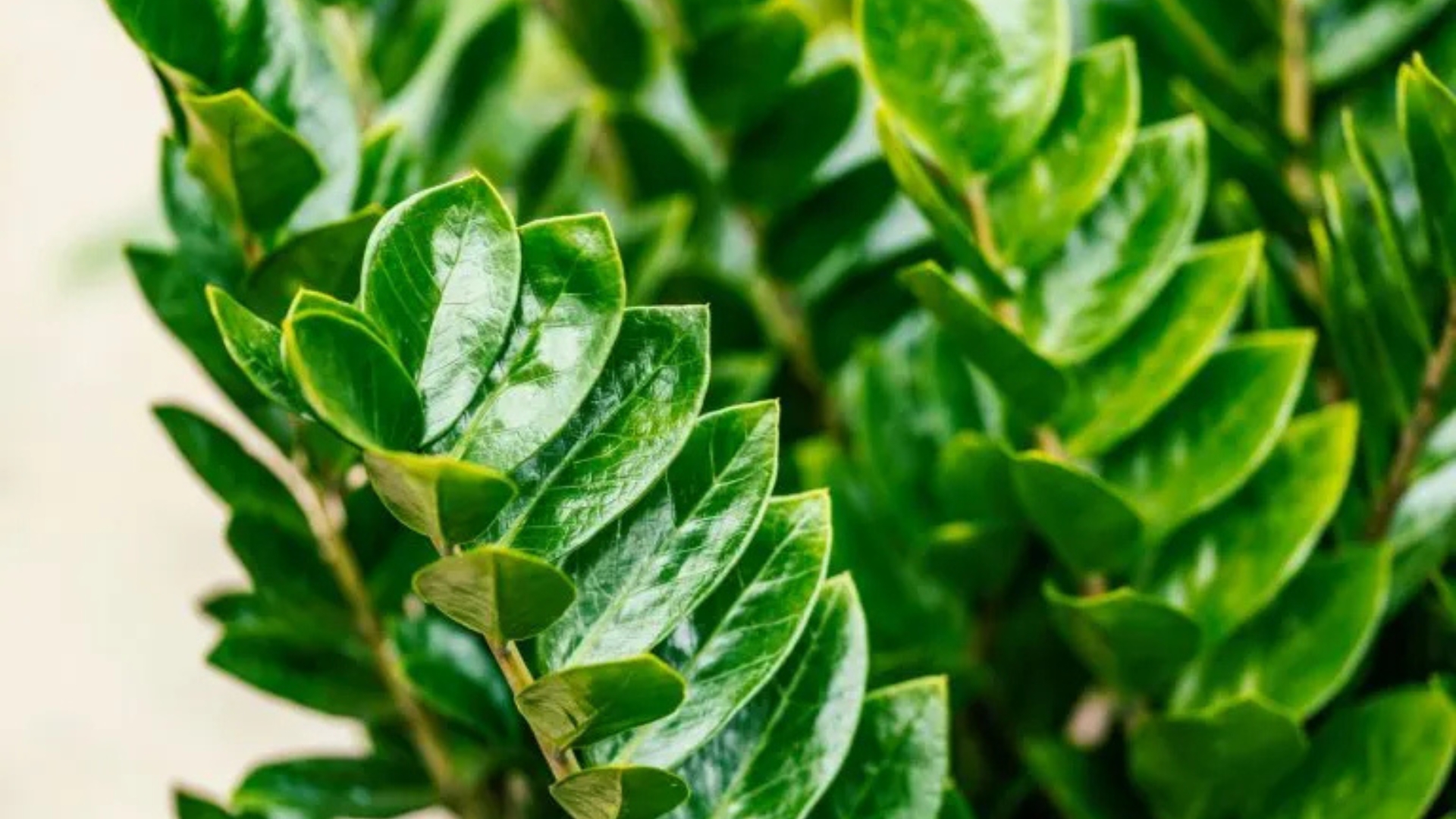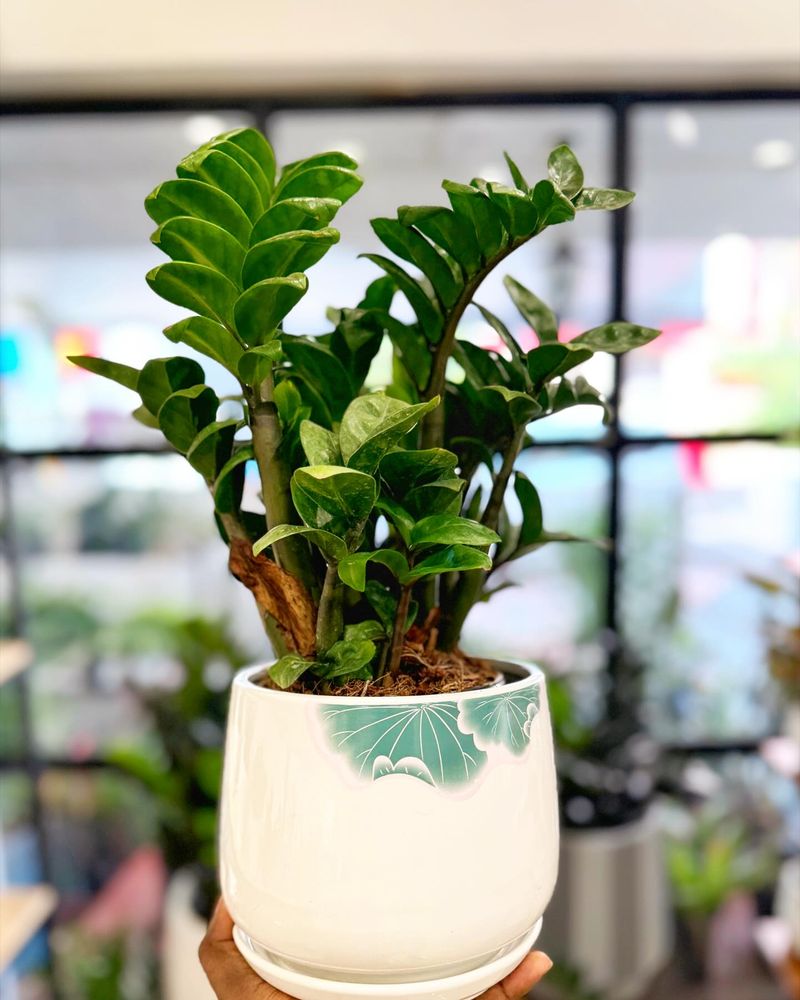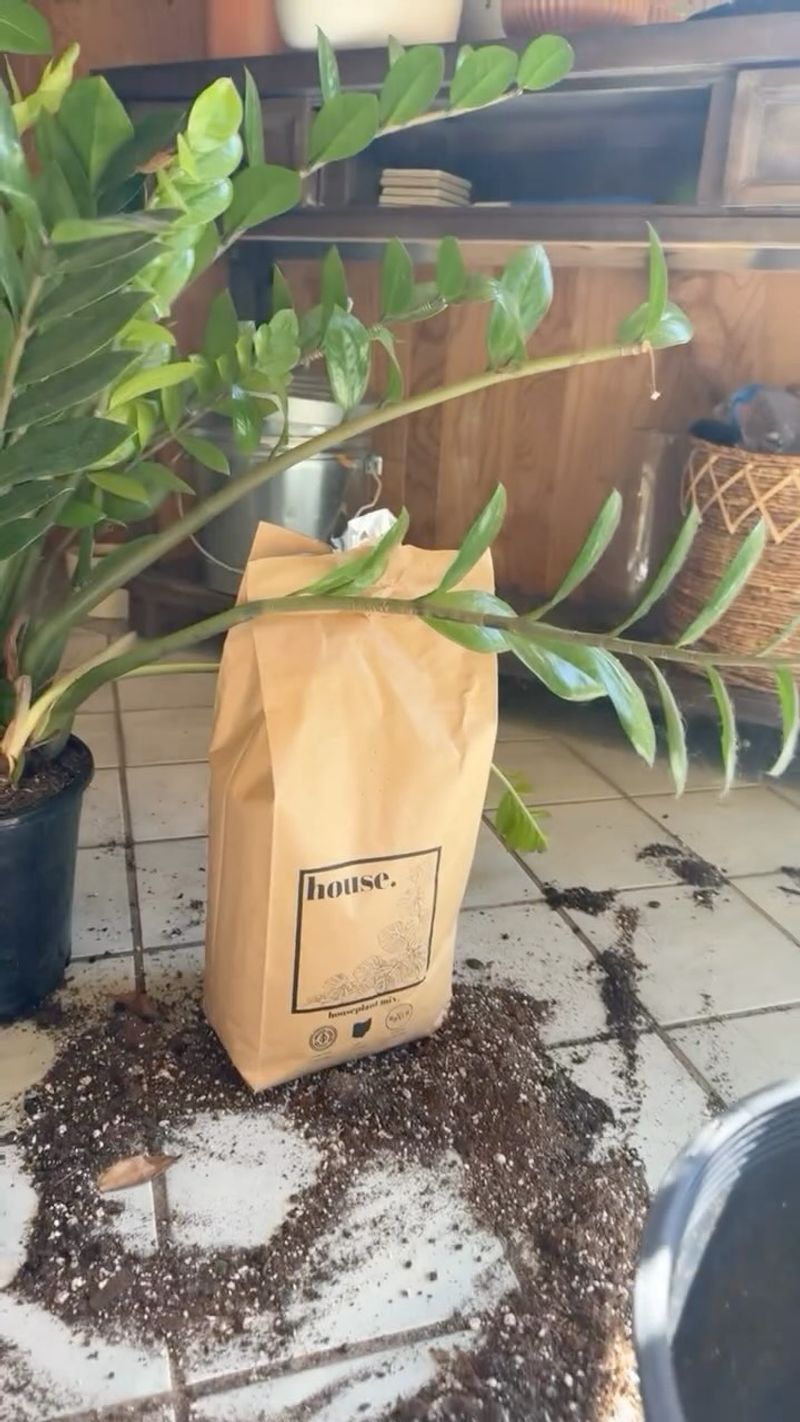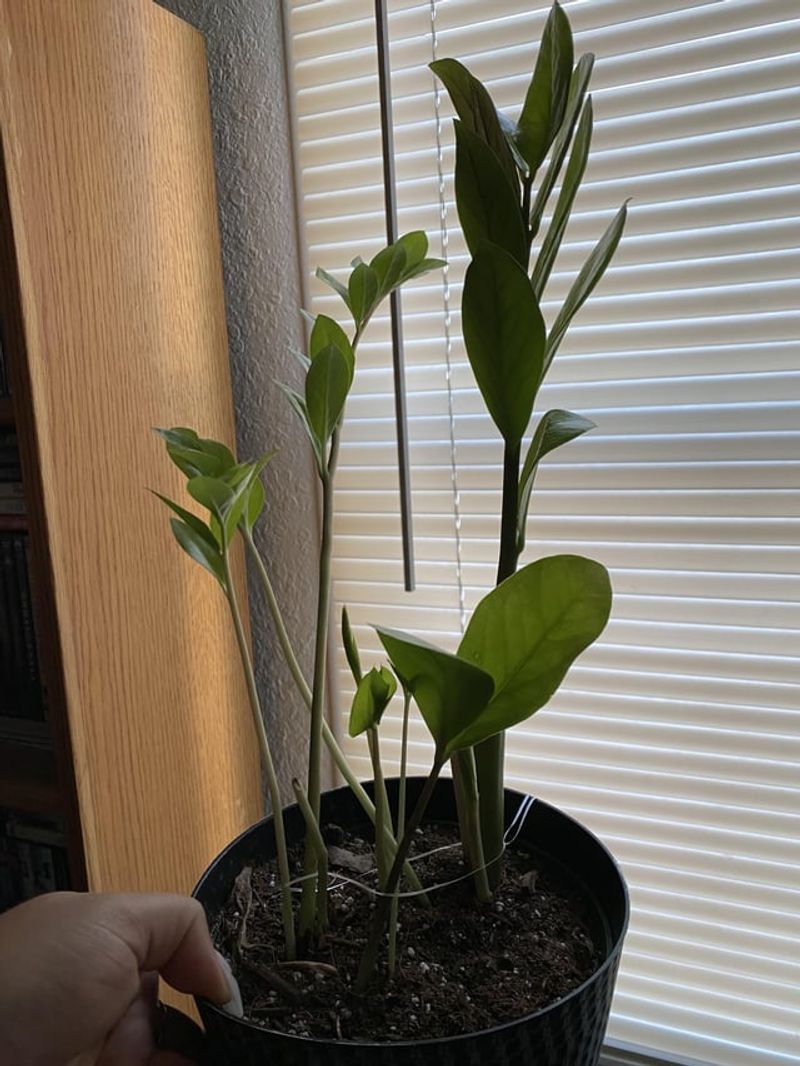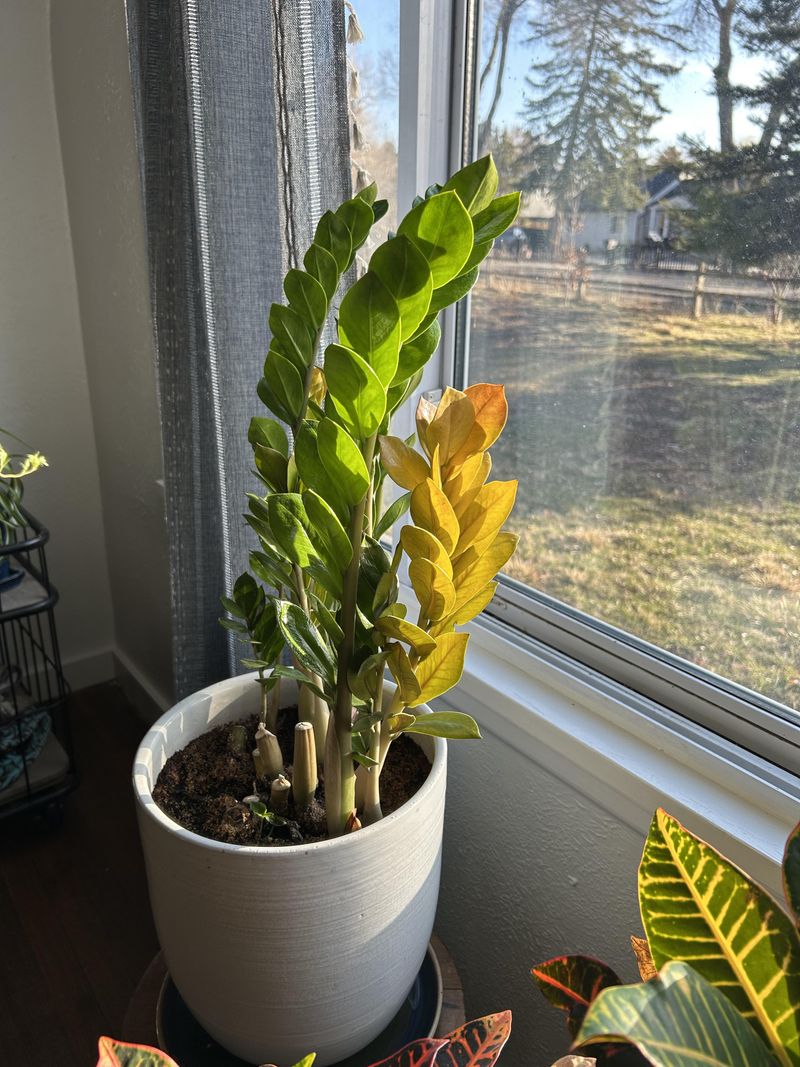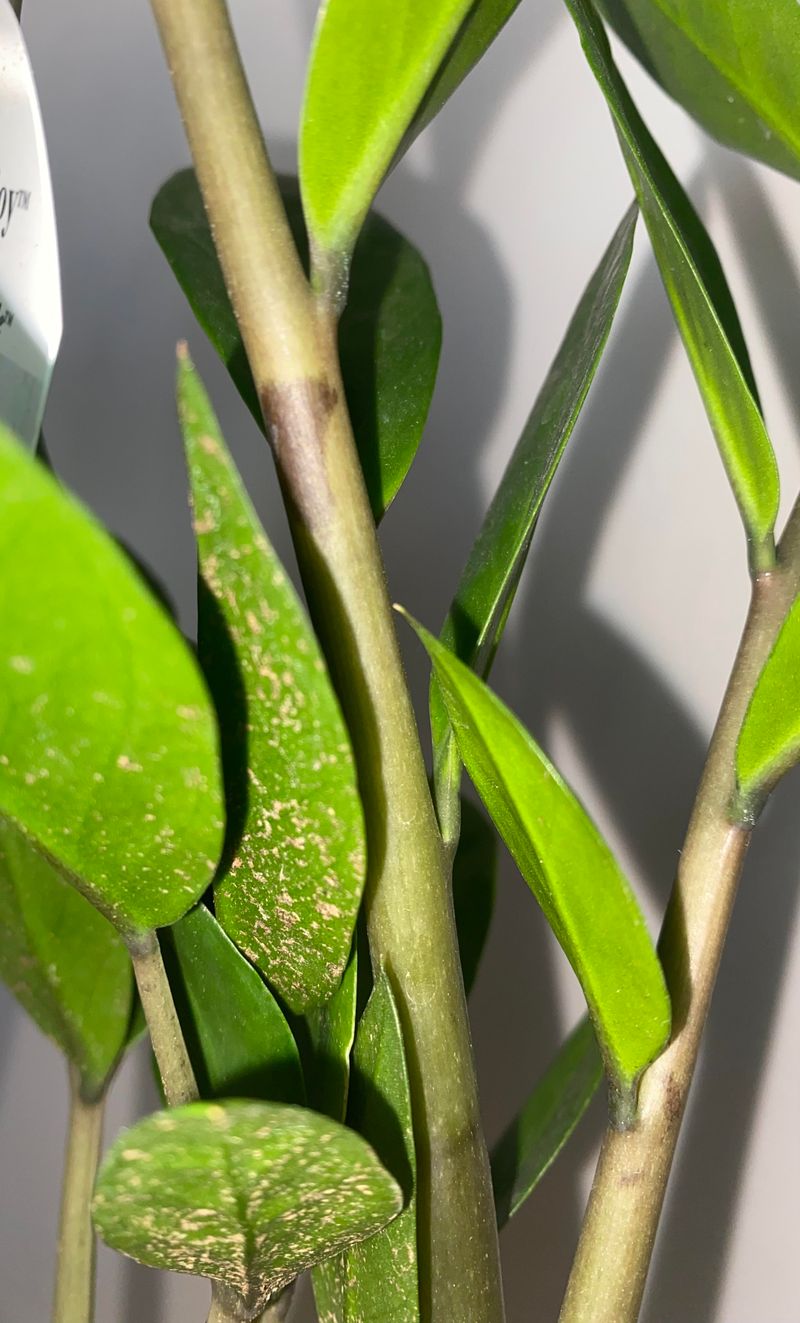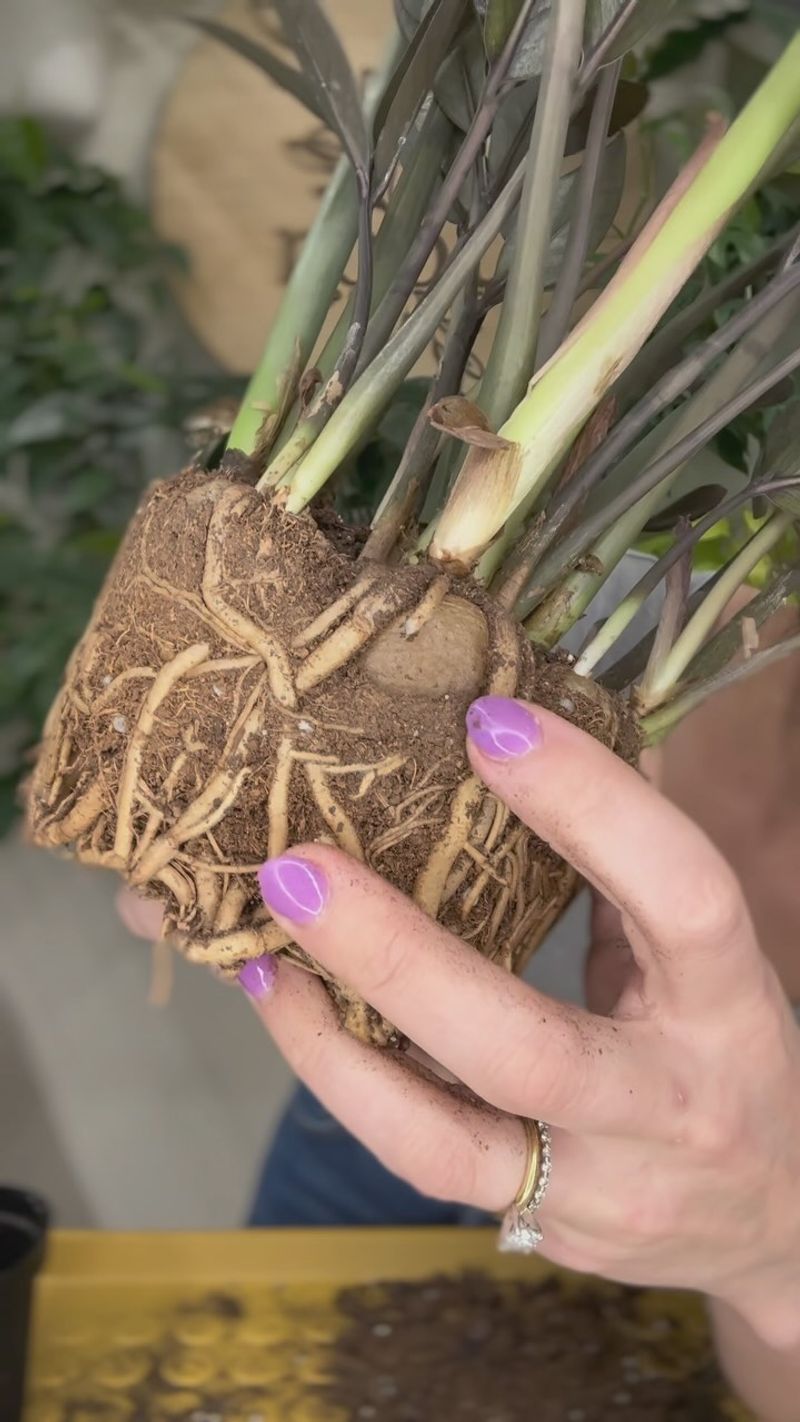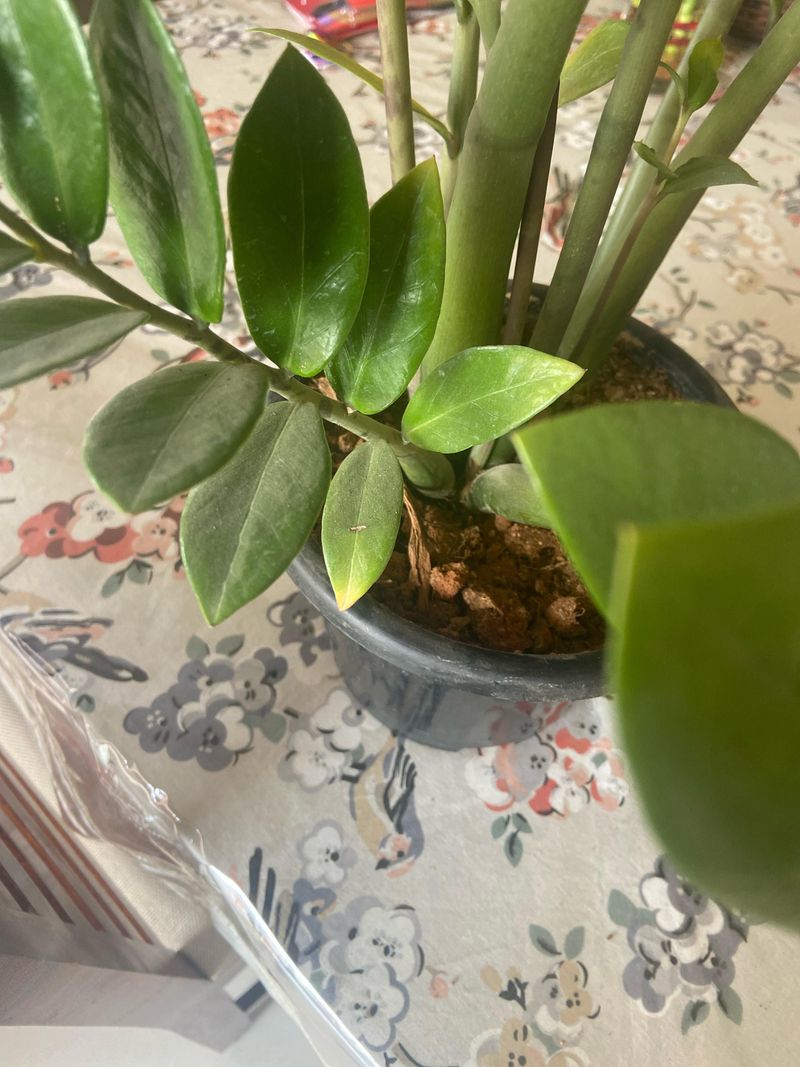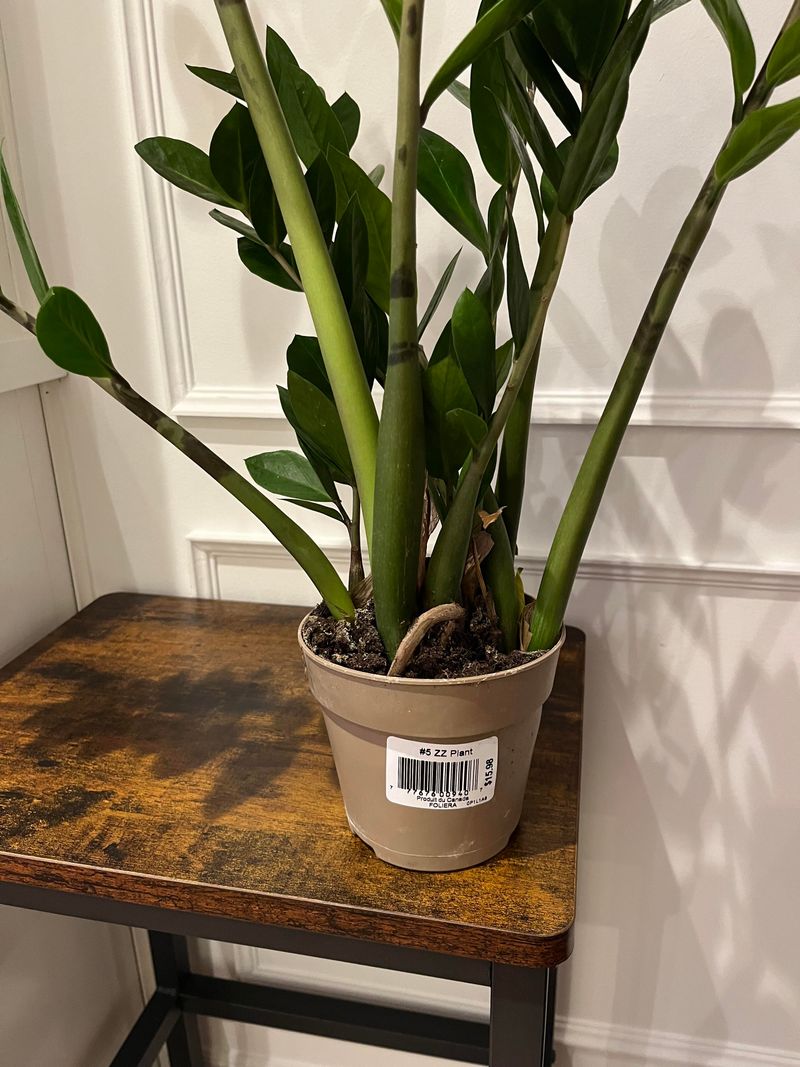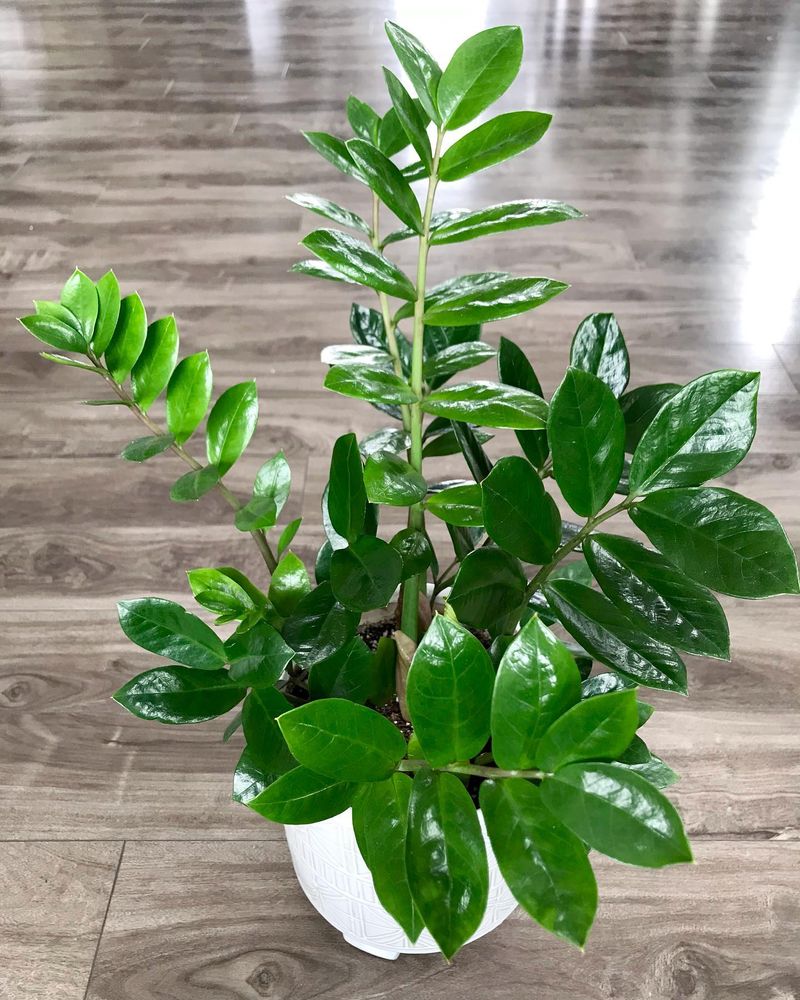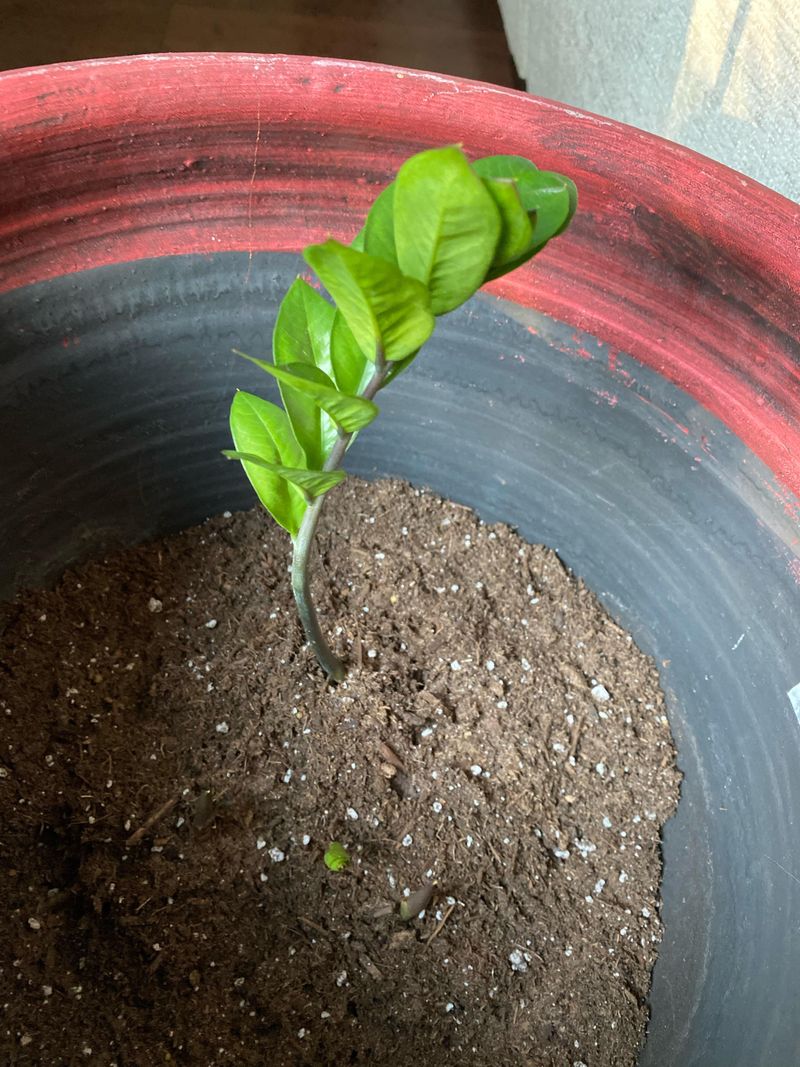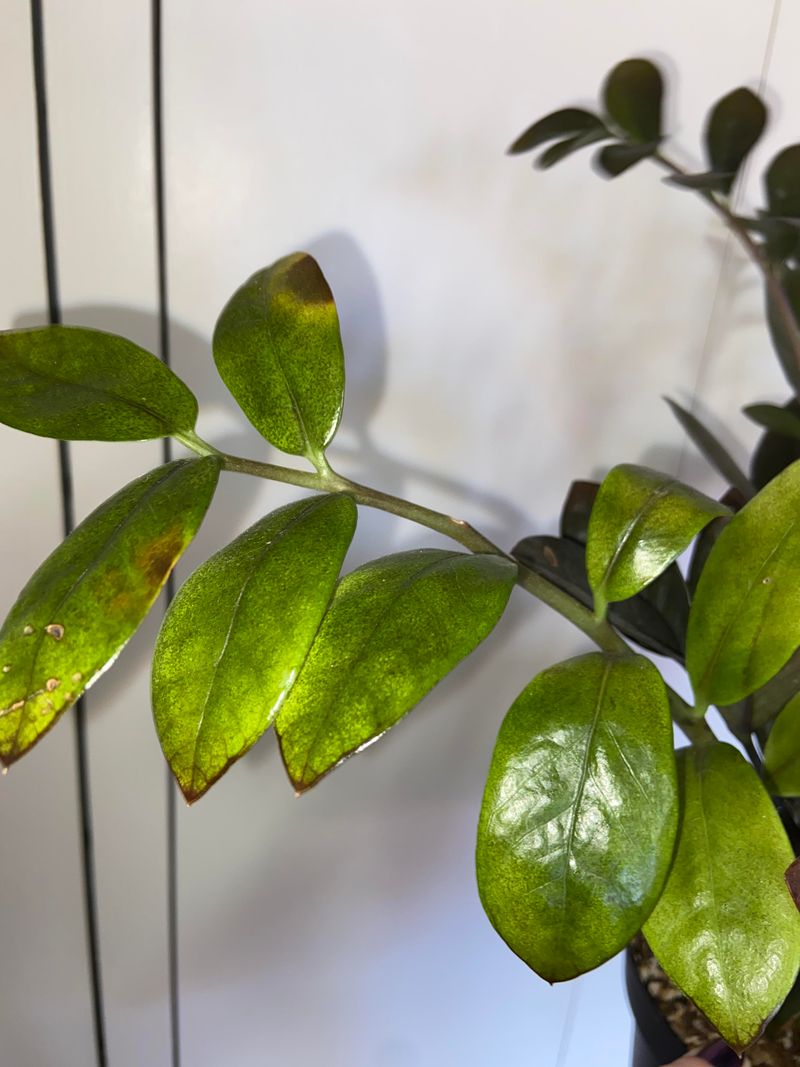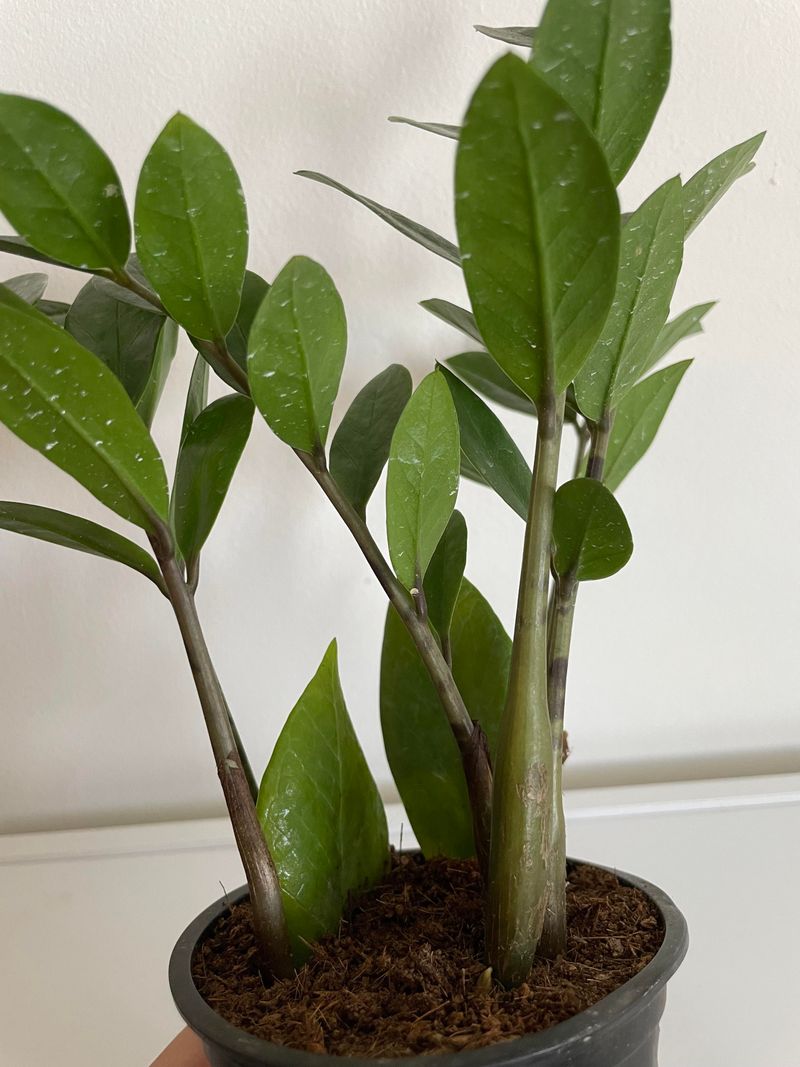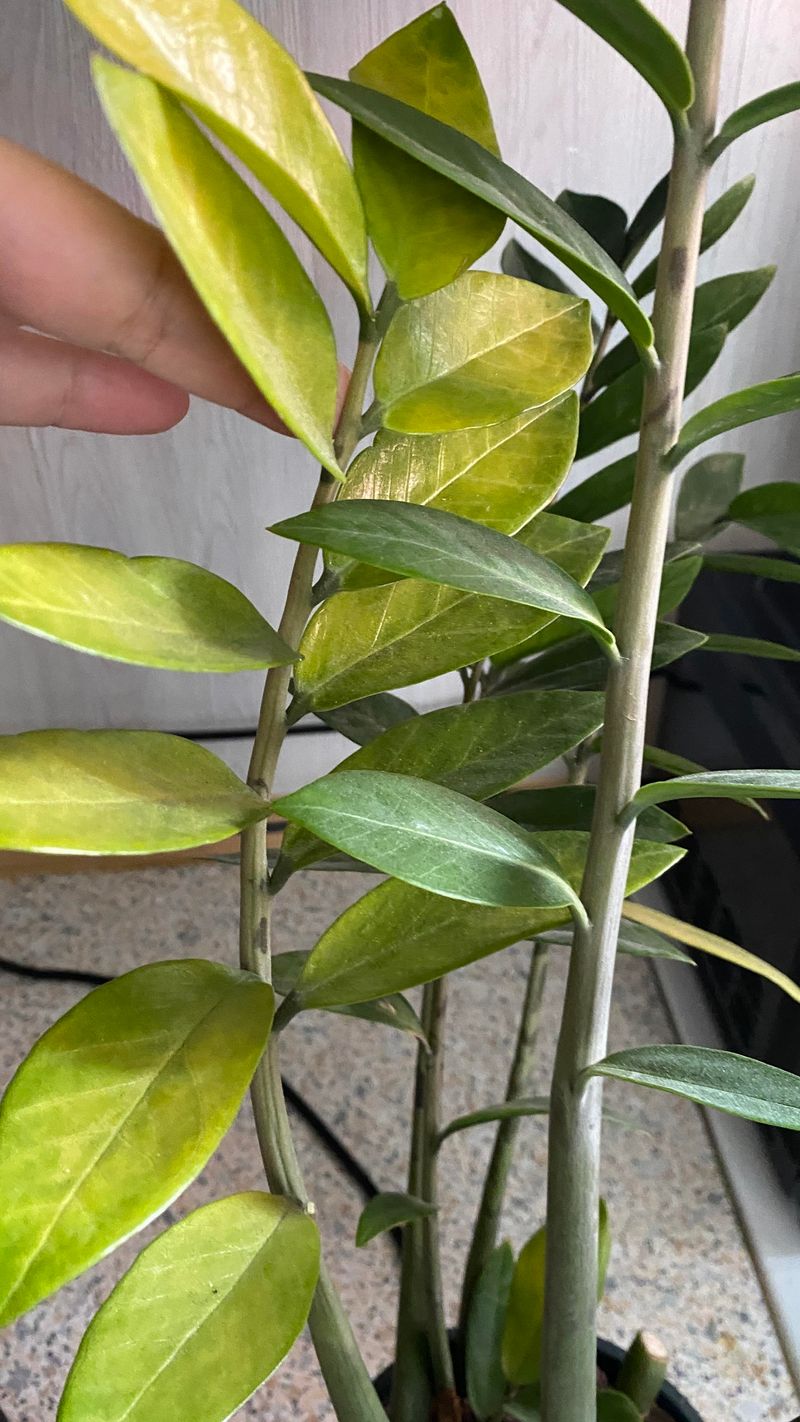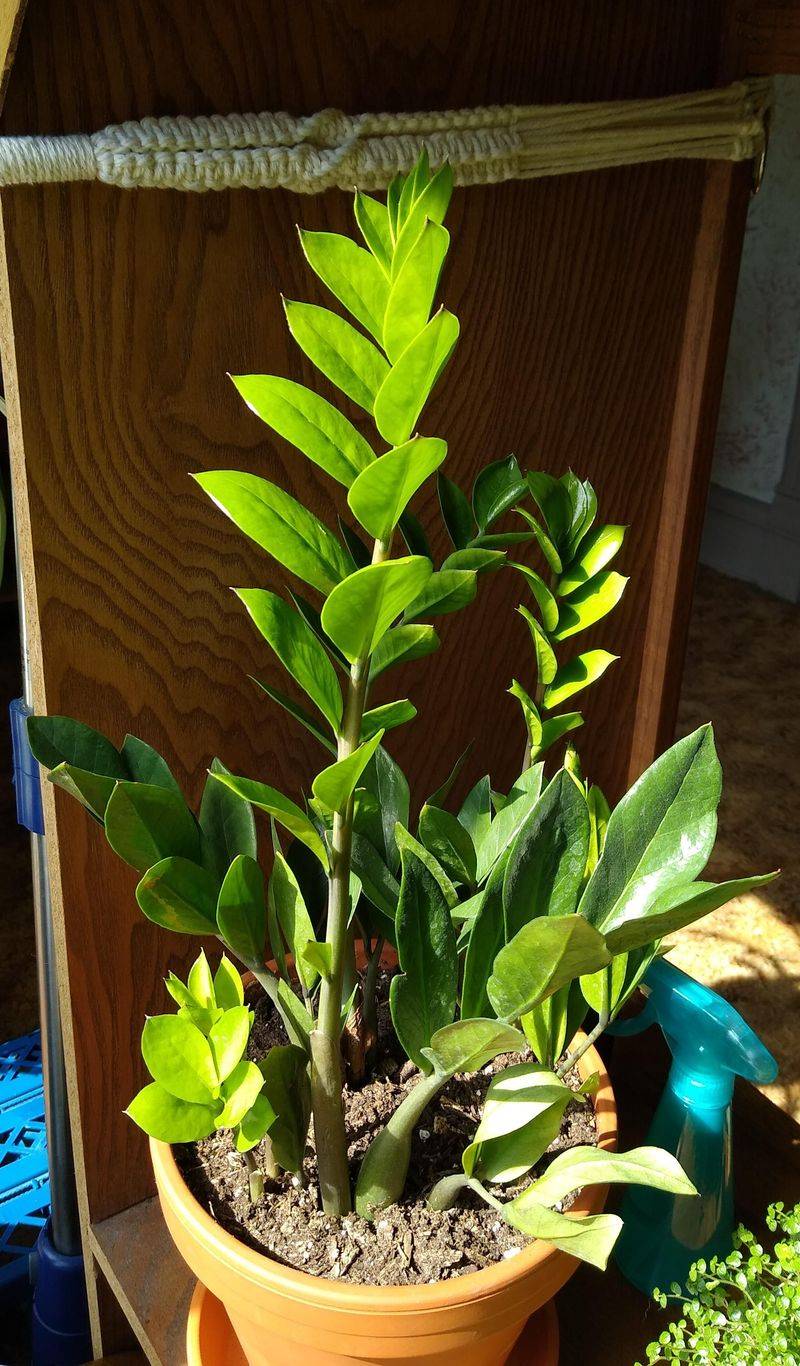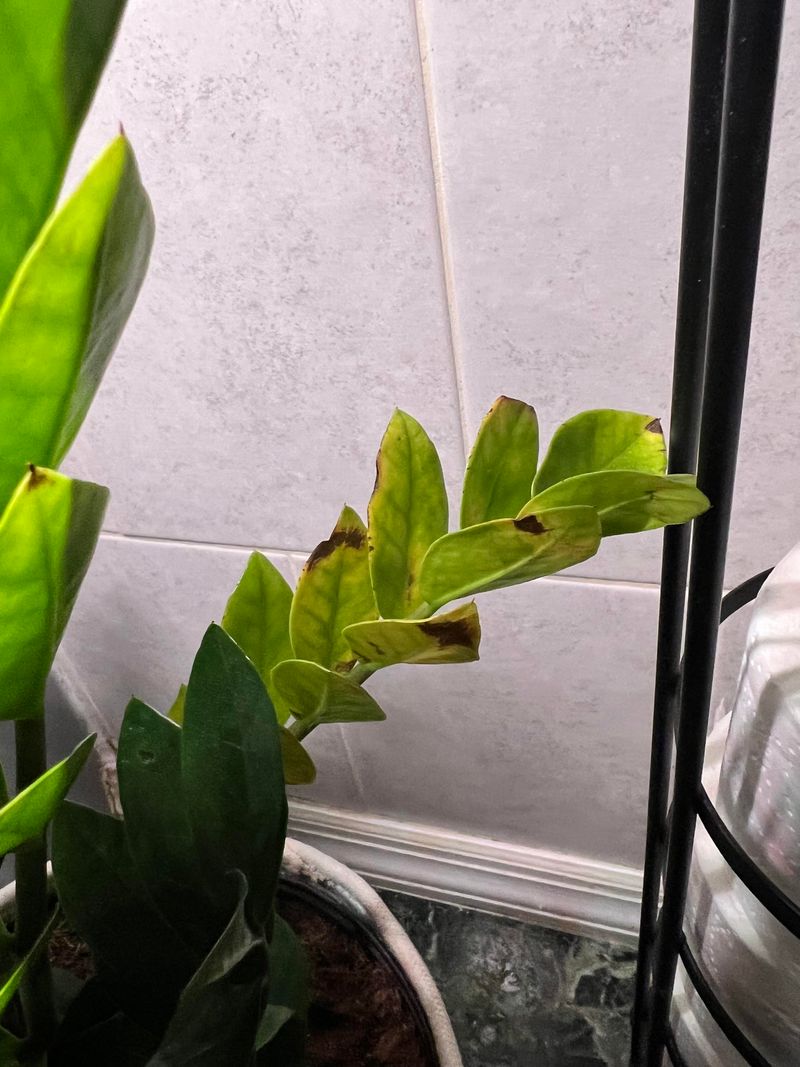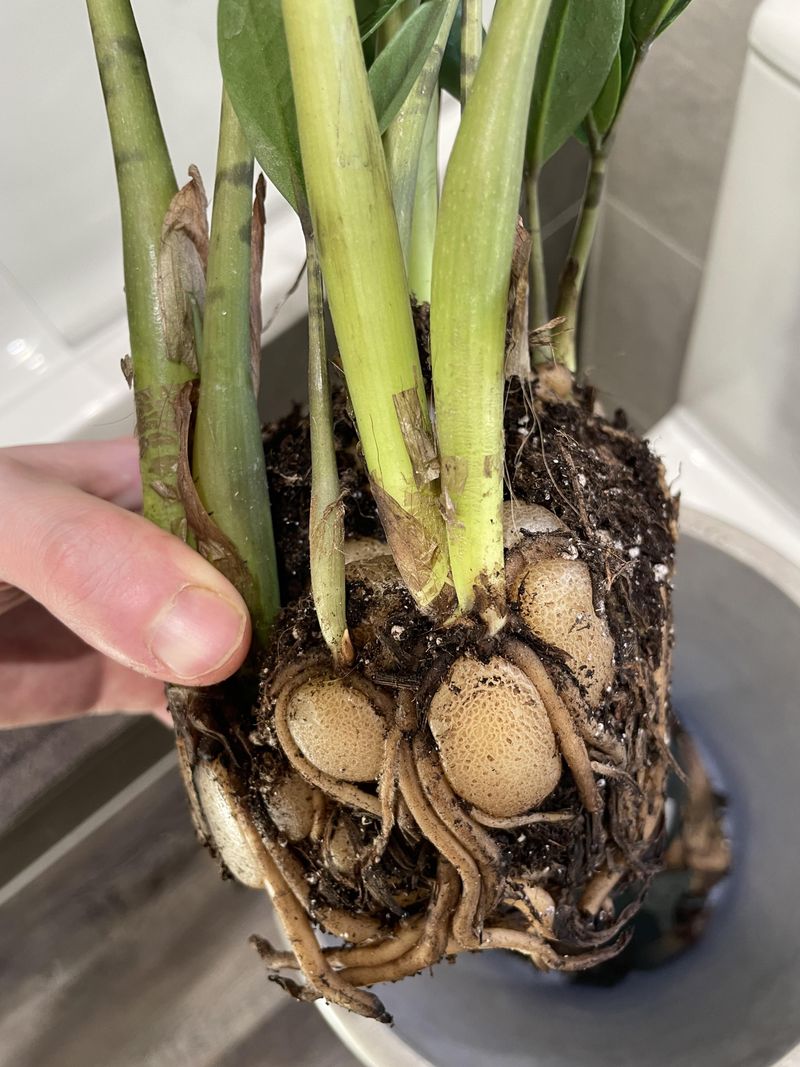Your ZZ plant might seem tough, but it can hit a rough patch just like any other green buddy. If it’s looking sad or struggling, there are usually a few simple fixes that can bring it back to its glossy, happy self.
From watering hiccups to light mix-ups, small changes can make a big difference. I’ve seen plenty of ZZ plants bounce back with just a little extra TLC.
Let’s break down the most common issues and how to help your plant thrive again.
1. Overwatering
Those yellowing leaves and mushy stems aren’t a cry for more water – they’re drowning! ZZ plants store water in their potato-like rhizomes, making them incredibly drought-tolerant. Most owners kill them with kindness by watering too frequently.
Allow the soil to dry out completely between waterings. In winter, your plant might need water just once a month. When in doubt, wait another week before reaching for the watering can. Your ZZ will thank you by perking right back up.
2. Poor Drainage
Standing water is your ZZ plant’s worst enemy. When water can’t escape, roots suffocate and rot begins to set in. The first warning signs include yellowing leaves, black spots, and a generally sad-looking plant.
Ensure your pot has drainage holes and empty the saucer after watering. Consider repotting in a container with better drainage using well-draining soil mix. Add perlite or pumice to regular potting soil to improve aeration and prevent water retention.
3. Insufficient Light
While ZZ plants tolerate low light, they don’t thrive in dark corners forever. Leggy stems reaching toward light sources, slow or nonexistent growth, and smaller new leaves are telltale signs your plant is light-starved.
Move your ZZ to a brighter spot with indirect light. East or west-facing windows are ideal, providing gentle morning or evening sun. Avoid harsh direct sunlight, which can scorch the leaves. Within weeks, you’ll notice more robust growth and a happier plant.
4. Temperature Stress
ZZ plants hail from warm African climates and detest cold drafts. Exposure to temperatures below 45°F can cause leaf drop, brown spots, and stunted growth. That gorgeous spot by your drafty window might be causing invisible stress.
Keep your plant away from cold windows, doors, and air conditioning vents. The ideal temperature range is 65-85°F. During winter, move plants away from windows at night when temperatures drop. Your ZZ will reward consistent temperatures with consistent growth.
5. Pest Infestation
Though resistant to most pests, ZZ plants occasionally attract scale insects, mealybugs, or spider mites. These tiny invaders suck sap from stems and leaves, causing yellowing, sticky residue, or fine webbing between leaves.
Isolate infected plants immediately to prevent spreading. Treat with insecticidal soap or neem oil, applying weekly until pests disappear. Wipe leaves regularly with a damp cloth to remove dust and discourage pests. Prevention is easier than treatment, so inspect new plants before bringing them home.
6. Root Rot
The dreaded root rot strikes when roots sit in soggy soil too long. Your once-sturdy ZZ will develop yellow leaves, black stems near the soil, and a distinctive foul smell when you check the roots.
Act quickly by removing the plant from its pot and cutting away all mushy, brown roots with clean scissors. Repot in fresh, well-draining soil, and water sparingly until new growth appears. Some plants can be saved if caught early, but prevention through proper watering is your best defense.
7. Nutrient Deficiency
ZZ plants aren’t heavy feeders, but they do need occasional nutrients. Pale new growth, smaller leaves, or slow development might indicate your plant has depleted its soil resources. This is especially common in plants that haven’t been repotted for years.
Feed with a balanced liquid houseplant fertilizer at quarter-strength once every 3-4 months during growing season. Skip fertilizing in winter when growth naturally slows. Don’t overdo it – too much fertilizer can burn roots and cause more harm than good.
8. Improper Potting Mix
Regular houseplant soil is often too dense and moisture-retentive for ZZ plants. Heavy, compacted soil prevents proper root breathing and drainage, leading to stunted growth and eventual decline. Your plant might look fine initially but deteriorate over time.
Repot using a mix of cactus soil with extra perlite or pumice for drainage. You can make your own by combining two parts regular potting soil, one part perlite, and one part coarse sand. This creates the airy, quick-draining environment ZZ plants love.
9. Container Size Issues
A pot that’s too large holds excess moisture around roots, while one that’s too small restricts growth and causes nutrient depletion. Root-bound ZZ plants develop stunted leaves and may push themselves up out of the soil as rhizomes expand.
Choose a container just 1-2 inches larger than the root ball when repotting. ZZ plants actually perform better slightly root-bound and only need repotting every 2-3 years. Look for roots circling the bottom or rhizomes pressing against the pot as signs it’s time to size up.
10. Transplant Shock
Recently repotted your ZZ plant? Drooping leaves and temporary growth stagnation are normal signs of transplant shock. The plant is adjusting to its new environment and focusing energy on establishing roots rather than maintaining foliage.
Give your plant time to recover by placing it in bright indirect light and watering only when the soil is completely dry. Avoid fertilizing for at least a month after repotting. Most ZZ plants bounce back within 2-3 weeks if their basic needs are met during the adjustment period.
11. Humidity Problems
While ZZ plants tolerate average indoor humidity, extremely dry air can cause brown leaf tips and edges. This is especially common in winter when heating systems reduce indoor humidity to desert-like levels.
You don’t need to mist ZZ plants (which can invite fungal issues), but consider using a pebble tray with water beneath the pot or grouping plants together to create a microclimate. Keeping humidity between 40-50% will prevent crispy edges while avoiding the excessive moisture that leads to rot.
12. Water Quality Issues
Tap water containing fluoride, chlorine, or high mineral content can accumulate in soil over time, causing brown spots or leaf tip burn. ZZ plants are somewhat tolerant but can develop problems with highly treated municipal water.
Consider using rainwater, distilled water, or filtered water if you notice symptoms. Alternatively, let tap water sit out overnight before using it to allow chlorine to evaporate. Flushing the soil thoroughly every few months helps remove mineral buildup and keeps your ZZ plant looking its best.
13. Natural Aging
Sometimes yellowing and dropping lower leaves aren’t a problem at all – they’re just part of the natural growth cycle. ZZ plants regularly shed older leaves as they produce new ones, especially at the bottom of the stems.
If only the lowest leaves are yellowing while new growth looks healthy, don’t worry! Simply remove yellowed leaves at the base with clean scissors. This normal process keeps your plant looking tidy and redirects energy to new growth. Excessive shedding throughout the plant, however, indicates a different problem.
14. Seasonal Changes
ZZ plants naturally slow or pause growth during winter months when light levels decrease. This dormancy period is normal but sometimes mistaken for trouble. Your plant isn’t dying – it’s conserving energy until conditions improve.
Reduce watering frequency during winter dormancy, allowing soil to dry completely between waterings. Hold off on fertilizing until spring when active growth resumes. As daylight hours increase, your ZZ will naturally return to its growing cycle with fresh stems emerging from the rhizomes.
15. Chemical Exposure
Household cleaning products, pesticides, or even furniture polish can damage ZZ plants if they drift onto foliage. Symptoms include sudden leaf spotting, brown patches, or entire stems dying back after exposure to airborne chemicals.
Move plants away from areas where sprays are used. Cover plants or move them temporarily when cleaning nearby surfaces. If exposure occurs, rinse leaves thoroughly with room temperature water. Severely damaged leaves won’t recover and should be removed, but the plant will usually produce new growth to replace them.
16. Rhizome Problems
The potato-like rhizomes beneath the soil are your ZZ plant’s lifeline. If they become damaged from overwatering, physical trauma, or disease, the entire plant suffers. Soft, mushy rhizomes indicate serious trouble requiring immediate attention.
Gently remove the plant from its pot and inspect the rhizomes. Cut away any soft, discolored sections with clean scissors, leaving only firm, healthy tissue. Allow cut surfaces to callus for a day before repotting in fresh, dry soil. Water sparingly until new growth appears.

